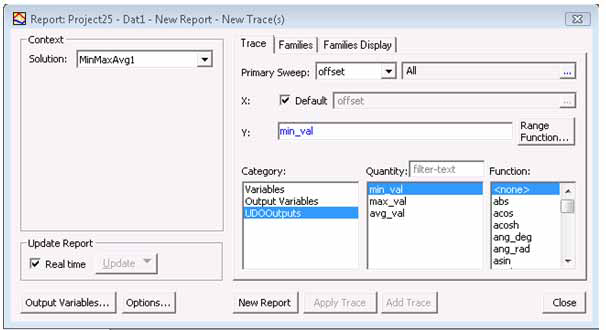GetInputUDSParams
This is the main definition method of the UDO. The supplied arguments populate details of the parameters to which the UDO user will specify value, specify the probe names and their types as well as the dynamic probe selections.
| UI Access |
The GetInputUDSParams function results in the following dialog
when you click Results>Create User Defined Solution. The mapping from the UDSParams
and the properties to the GUI elements should be unambiguous. The name and description of the UDS
are also displayed in the Create New User Defined Solution window. When a report is created from the UDO dialog box, the category and quantity names
specified by the UDO are used (as seen below). |
||||||||||||
| Parameters |
|
||||||||||||
| Return Value | Boolean. If true, the event was handled successfully. If false, it was not. |
| Python Syntax | GetInputUDSParams(<udsParams>, <propList>, <userSelectionForDynamicProbes>) |
| Python Example | |


